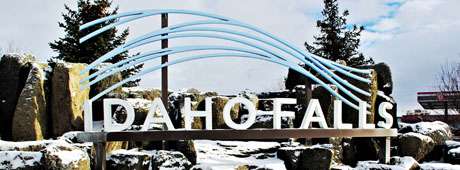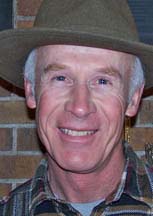No products in the cart.
Idaho Falls Spotlight

The Pros and Cons of Popularity
Story and Photos by Bruce Bash
After two decades of publication, IDAHO magazine has begun to revisit some of our Spotlight City selections of previous years. Here’s a new look at Idaho Falls, which the magazine first profiled in our September 2002 issue.
Move to any new city and you’ll most likely hear the canned adage about the weather. “If you don’t like the weather, wait a few minutes.” Or an hour. Or if you’re talking to a local comedian, wait around a couple decades. My wife Mary and I, kids in tow, moved to the Idaho Falls area in late August 1983. As we rushed to empty the moving van, I happened to notice the leaves on the tree in our front yard were dark and crinkled at the edges. A disease, I thought. Hope it’s not contagious. I learned later that a hard frost had already hit the area. Our kids walked to school their first day with light snow falling. By December we were shoveling snow every couple days. The temperature dropped to thirty below zero in January. “This is really unusual weather,” a co-worker remarked while scraping thick ice off her car’s windshield. We hoped she was right.
I had transferred to Idaho Falls, sight unseen, to accept a job with the Bureau of Land Management. A flatlander from Ohio, I had worked for the Forest Service in the timber country of north-central Idaho during my summer breaks from college. After I graduated and had worked six years for the BLM in New Mexico, I was anxious to return to my “second home.” Imagine my surprise when our family rolled into town and found the city surrounded by miles of irrigated farmland instead of the dense timber I had experienced up north. Except for the mountains in the distance and plentiful irrigation lines, the flat countryside looked a lot like Ohio.
During our second winter in Idaho Falls, it seemed we shoveled snow every day. Snow piled up in long windrows along each side of our driveway and soon reached chest-high. The temperature dropped to thirty-five below and the wind rarely stopped blowing. One sunless day the BLM office received a call from the local office of the Fish and Game Department. They needed help relocating a moose camped out in a resident’s backyard and enjoying their ornamental shrubbery.
A few of us drove to the south side of Fielding Cemetery in time to see a Fish and Game officer sneak around the side of a house with a dart-loaded gun. We heard a muffled pop and moments later a large female moose charged across the road in front of us. “Drop, drop!” my co-worker yelled at her, but the moose had no intention of making our task easy. She ran forty-plus yards from the road toward the center of the cemetery before lying down as the tranquilizer took effect.
You can never appreciate the term “dead weight” until you’ve dragged a seven-hundred-pound moose, stretched out on a thick tarp, through knee-deep snow toward a horse trailer that looks as if it’s parked in the next county. After multiple breaks to rest and continuous grunting, we finally got the moose loaded and ready to transport to a new home far from town.
This content is available for purchase. Please select from available options.
Purchase Only
Purchase Only


Comments are closed.